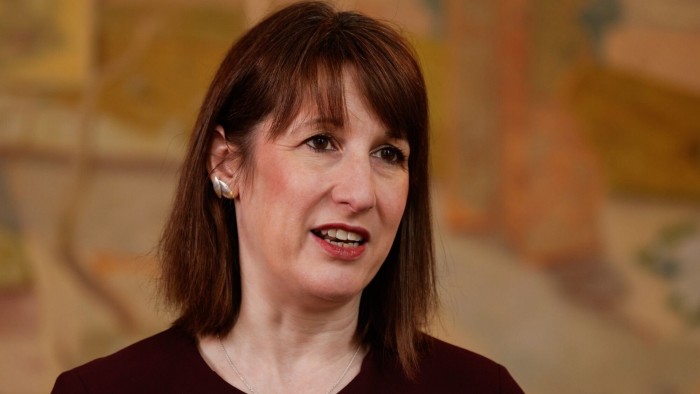
Unlock the Editor’s Digest free of charge
Roula Khalaf, Editor of the FT, selects her favorite tales on this weekly publication.
UK chancellor Rachel Reeves is planning a brand new, multibillion-pound public spending squeeze in subsequent week’s Spring Assertion, following the announcement on Tuesday of £5bn in welfare cuts.
Reeves is searching for additional cuts to fill a gap within the public funds and can trim proposed budgets for Whitehall departments later within the parliament, in line with officers briefed on her plans.
Sir Keir Starmer, prime minister, has dominated out a return to “austerity” however officers say Reeves has at all times indicated she is going to “alter” spending plans if the financial outlook worsened.
“The world is altering,” Reeves mentioned this week.
After fuelling a short-term enhance to spending together with her £40bn of tax will increase in October’s Funds, Reeves had pencilled in a mean 1.3 per cent common rise in actual departmental spending from 2026-27 onwards.
Curbing real-terms progress in day-to-day departmental spending to about 1.1 per cent would save the Treasury roughly £5bn a 12 months by the top of the parliament, in line with the Institute for Fiscal Research, primarily based on October’s inflation forecasts by the Workplace for Funds Accountability.
This progress fee remains to be marginally above that implied in former chancellor Jeremy Hunt’s spending plans earlier than the election.
Rising authorities borrowing prices and anaemic progress have blown a gap in Reeves’ plans; economists count on the worsening outlook to have eradicated most or the entire £9.9bn of headroom she had in an effort to meet her fiscal guidelines within the October Funds.
One authorities official mentioned monetary markets would count on Reeves to recreate a “affordable degree of headroom” in her Spring Assertion on Wednesday subsequent week; one fiscal rule says present spending have to be matched by tax receipts in 2029-30.
Reeves has rejected calls by backbench Labour MPs to loosen the fiscal guidelines and her allies don’t count on the chancellor to fill the hole with tax rises. That leaves a tighter spending squeeze on Whitehall departments which might be already strapped for money.
Final week quite a few ministers protested about expenditure curbs at a cupboard assembly, however authorities insiders insist that specializing in reform implies that public providers will be maintained even when charges of spending progress are lowered.
Starmer final week promised higher worth for cash with civil service reforms and deploying extra expertise. “Each pound spent, each regulation, each resolution should ship for working folks,” he mentioned.
Reeves dangers being accused by leftwing Labour MPs of funding public providers at a degree akin to that deliberate by Hunt — however her allies insist the chancellor has “credible plans” for getting higher worth for cash.
“The distinction is that now we have set out plans on how we will make departments extra productive and the way we will scale back prices,” mentioned one. “This isn’t a return to austerity.”
Reeves’ allies additionally argue that as a result of she “front-loaded” spending to hold out pressing repairs to providers, lower-than-expected progress in expenditure in later years can be simpler to bear.
She warned this week Britain was going through powerful occasions and that “elevated world headwinds, akin to commerce uncertainty, are being felt throughout the board”.
Authorities officers say that US President Donald Trump’s commerce wars might “blow all our plans off target”.
In October Reeves set departmental spending plans for 2025-26, with allocations for 2026-27 onwards as a consequence of be introduced in June.
Reeves will achieve some flexibility due to Starmer’s resolution to raid the overseas help price range to fund a £6bn-a-year rise in defence spending by 2027.
A portion of this spending is prone to be handled as capital expenditure, which doesn’t rely in direction of Reeves’ fiscal rule requiring her to file a present price range surplus in 2029-30.
Economists have burdened that to be credible with monetary markets, the chancellor might want to begin making financial savings throughout the interval of the upcoming complete spending assessment, relatively than pencilling in steeper cuts in direction of the top of the parliament.
Ben Zaranko on the IFS think-tank mentioned Reeves might keep on with 1.3 per cent progress in actual, annual departmental spending over three years after which pencil in “stonking cuts proper on the finish of the parliament”.
However this might elicit claims she was responsible of “fiscal fiction” — a critique of Hunt’s tight however unspecified spending plans, he added.
A Treasury spokesperson mentioned: “The federal government’s dedication to fiscal guidelines and sound public funds is non-negotiable.
“As beforehand introduced, the [OBR’s] subsequent forecast can be introduced to parliament on 26 March alongside an announcement from the chancellor. We don’t touch upon hypothesis round OBR forecasts.”




